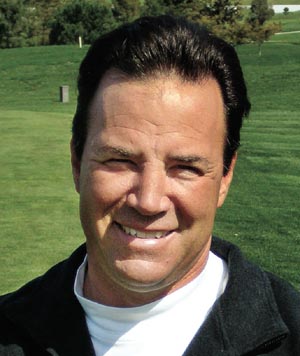Leone’s Lessons: What’s the big deal about spinning the ball?
Many of my students ask me how to spin the ball to make it stop. My
answer is,
”
Why!?
”
What’s the big deal about spinning the ball? Many of my students ask me how to spin the ball to make it stop. My answer is, “Why!?”
Yes, it does look great when you see a tour player hit the ball past the pin and draw it back close to the hole. That’s good for the pros, but it may hurt the average player. Most amateurs seldom get the ball to the hole in the first place, so why would you want to spin the ball further way from the hole?
To spin the ball, you need the right situation. With today’s technology, using square-groove clubs — no more for the tour players — and golf balls designed to spin, it makes it easier to create spin. When hitting a shot from the fairway, place the ball slightly back into your stance, as this creates a slight descending blow into the ball.
The key is to accelerate through the ball, squeezing the ball between the turf and clubface. The ball stays on the clubface longer — that produces spin. But, if the ball is sitting in the rough, it’s unlikely the ball will spin as much if at all. The grass gets between the clubface and the ball, eliminating the grooves on the club, which helps produce spin.
When it comes to chipping and pitching, your No. 1 priority is distance control. The less spin you have, the more control you’ll have when the ball lands on the putting surface. To reduce spin, avoid using a lot of wrist action during your stroke.
With chipping, use what we call a one-lever stroke. Swing the club working your hands and arms together. When pitching, use a two-lever stroke, where the hands will hinge slightly on the back swing but remain quiet and firm on the forward swing. The pitch shot will produce more spin than a chip shot.
I’ve always said the sign of a good short game comes with a player who knows how the ball is going to react once it lands on the green.










